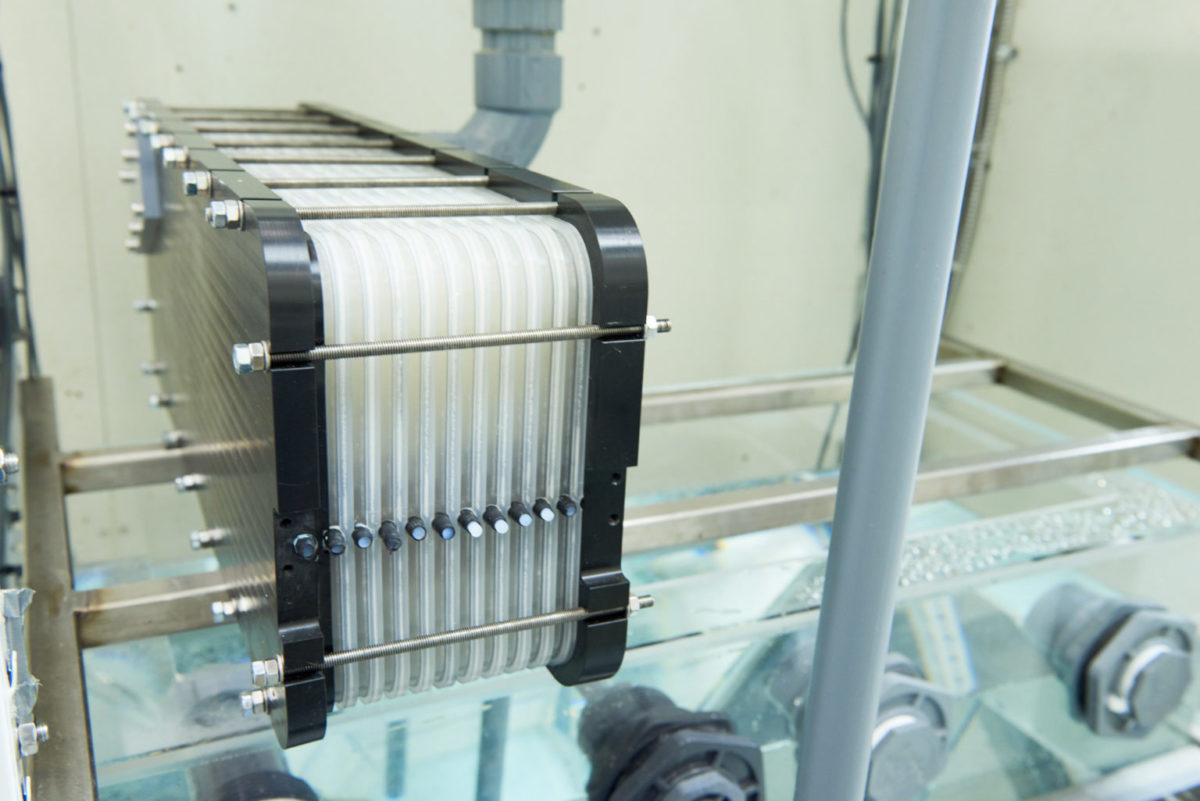From pv magazine Global
Zinc8 Energy Solutions has announced that its inaugural commercial production facility will be built in Ulster County, New York. Based upon comprehensive analysis done by the company, the recently announced US Inflation Reduction Act (IRA) manufacturing production credits provide distinct and direct benefits to Zinc8, influencing its production plans in the United States.
Zinc8 Energy Solutions has developed a proprietary flow battery technology that it claims is able to deliver power in the range from 20 kW to 50 MW that can store and discharge energy durations from 4 to 100 hours. Scalability and higher capacity is achieved with an increase in the size of storage tanks that hold zinc particles. The modular battery can be configured to support a wide array of long-duration applications for microgrids and utilities, as well as for commercial and industrial projects.
Unlike lithium-ion technology, which requires new stacks to scale, Zinc8 says it has completely decoupled the linkage between energy and power. This means that scaling Zinc8’s technology can be accomplished by simply increasing the size of the fuel tank and quantity of recharged zinc fuel. According to the manufacturer, the technology promises zero capacity fade over an extensive lifetime, and the batteries are non-flammable, non-toxic and sustainable with stable supply chains for mass production.
The company chose Ulster County in upstate New York after Senator Chuck Schumer personally called the CEO of Zinc8, Ron MacDonald, to urge the company to expand their operations in New York state and particularly to Ulster County.
The Canadian company was enticed to move to the USA as a result of the Advanced Manufacturing Tax Credit included in the IRA, which provides incentives to battery manufacturers as well as to critical mineral processing companies. Every eligible battery cell will receive a $35 credit, scaling with the capacity of the battery, with incentives to last at their initial level until 2029, before phasing down from 2030 to a phase out stage beginning in 2032.
There is also $10 billion support available for construction of clean energy tech factories, or for retrofitting existing factories with tools and production lines to make clean energy equipment and components. President Biden’s Bipartisan Infrastructure Law includes $6 billion incentives to support R&D and production of batteries in the United States, which bolsters the domestic supply chain.
“This represents some direct and beneficial credit opportunities for Zinc8,” said MacDonald. “It is abundantly clear that with the introduction of the IRA, US policymakers, led by Senator Schumer, are taking real action by introducing incentives that benefit both the climate and the economy. We have received tremendous support both at the federal and state level as we continue to analyze possible sites for our first manufacturing facility.”
Zinc8 signed a letter of intent to move into iPark87, which is the former TechCity campus now being redeveloped as an EPA cleanup site. Schumer said that with Zinc8 as an anchor tenant of iPark87, the Hudson Valley could see up to 500 new, good paying clean energy jobs.
“Zinc8 is the jolt of electricity the Hudson Valley needs, and is proof positive that when you invest in fighting climate change you are investing in creating good-paying jobs, new economic growth, and a brighter future for our communities. As the EPA officially begins cleanup of this once-contaminated asbestos dumping ground, I can think of no better way to usher in a renaissance for Ulster County than by making this the foundation for supercharging the fight against climate change with an investment in clean tech manufacturing,” said Schumer.
In January, Zinc8 said it would install its technology at a New York City housing complex in a trial run by the New York State Energy Research and Development Agency (NYSERDA). The plan is for a 100kW/1.5MWh zinc-air energy storage system (ZESS) to be installed at Fresh Meadows Community Apartments in Queens, New York, to support and enhance the economics of a Combined Heat and Power (CHP) system currently under construction, along with an existing photovoltaic system.
This content is protected by copyright and may not be reused. If you want to cooperate with us and would like to reuse some of our content, please contact: editors@pv-magazine.com.









By submitting this form you agree to pv magazine using your data for the purposes of publishing your comment.
Your personal data will only be disclosed or otherwise transmitted to third parties for the purposes of spam filtering or if this is necessary for technical maintenance of the website. Any other transfer to third parties will not take place unless this is justified on the basis of applicable data protection regulations or if pv magazine is legally obliged to do so.
You may revoke this consent at any time with effect for the future, in which case your personal data will be deleted immediately. Otherwise, your data will be deleted if pv magazine has processed your request or the purpose of data storage is fulfilled.
Further information on data privacy can be found in our Data Protection Policy.